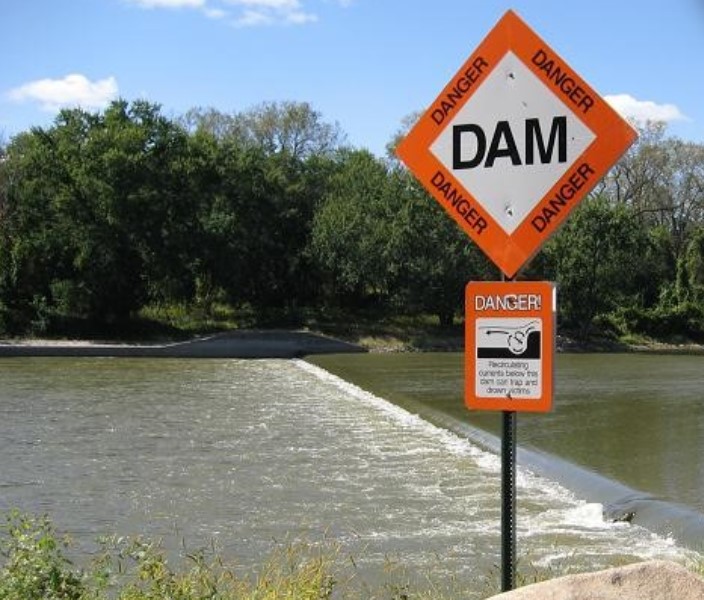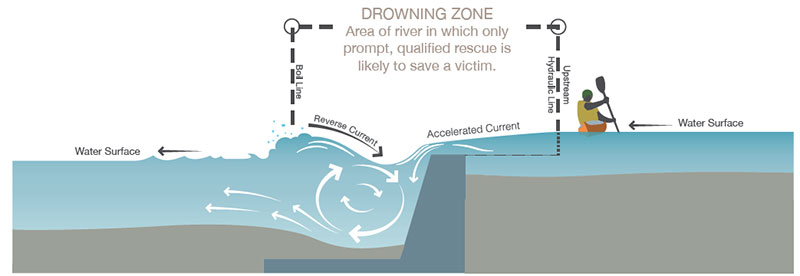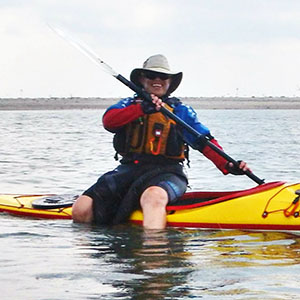On May 14th a beautiful celebration of life was held on Kent Island to say good by to long time CPA member and founder of the KIPP Kent Island Practice Paddles, Marshall Woodruff. The ceremony was held on the beach at Ferry Point Nature Park. The day started with a group of nine paddlers who launched from Kent Narrows and paddled through the fog around to the Ferry Point Park beach to meet several family and friends who walked to the beach. A ceremony was conducted by Pastor Susan Walker and concluded with the paddlers carrying Marshall’s ashes out to deeper water and spreading them. For me I doubt if I can ever paddle past this place and not think of Marshall. Rest in Peace Marshall.
Low-Head Dam Safety–This past Memorial Day a group of twelve kayakers and paddle boarders accidently went over a low head dam in the James River near Richmond. The river had been running several feet above normal levels due to recent rains, so the speed and hydraulic force of the water is tremendous. At last report ten of the paddlers were rescued, one of the kayakers was deceased and the other kayaker is still missing. It is sad when people go out for a fun day on the water, and it ends in tragedy.

If you’re not familiar with low head dams, they look innocent, but they are extremely dangerous and are often called drowning machines (leave it to mankind to invent such an awful way to die). You may be wondering how a low head dam differs from a waterfall. A waterfall is much safer to run since the area above and below the waterfall are irregular so the hydraulic force below the waterfall is rarely constant enough to hold a person in place. A low head dam is a continuous shape shore to shore so the hydraulic force can hold a person indefinitely. The water flowing over the dam is aerated by the dropping water forcing oxygen into the water which means your PFD will not float high enough for you to breath. The water flowing over the dam is also circulating upstream to fill the void behind the drop, so you always have water pressure holding objects in place. I read that as a last resort a person stuck in a hydraulic like this can remove their PFD so they can swim below the circulating upstream flow of water and be pushed out of the hole by the water traveling downstream under the hydraulic-not a good thing to tell a person fighting for their life.
I have found very few low head dams in Maryland, but they do exist and are much more common in Virginia and Pennsylvania. Over the past few decades, the Europeans have been redesigning low head dams to make them safer by adding baffles above or below the dam to break up the constant hydraulic.
Several years ago, I attended a river rescue clinic taught by the Ohio Department of Natural Resources. The Ohio DNR started this program after an incident at a low head dam that left several fireman and police rescuers needing rescued and a few of them drown. The mission of the Ohio DNR training was to train rescue personnel in the dangers of low head dams. The dam that caused all this misery was only a few feet high, but it had enough force to cause this tragedy.
Paddle on-the season is here!
Bill Smith
Share This





